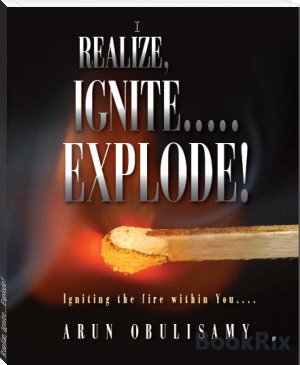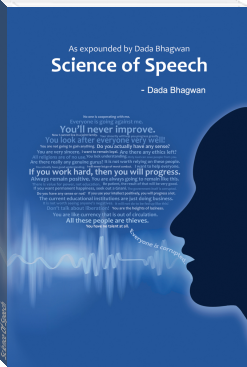An Introduction to Yoga by Annie Besant (best historical fiction books of all time txt) 📖

- Author: Annie Besant
Book online «An Introduction to Yoga by Annie Besant (best historical fiction books of all time txt) 📖». Author Annie Besant
From this you pass on to the conquest of the causal body in a similar way. When the conquering of the causal body is complete then you go to the conquering of the Buddhic body. When mastery over the Buddhic body is complete, you pass on to the~conquest of the Atmic body.
Mind and Self
You cannot be surprised that under these conditions of continued disappearance of functions, the unfortunate student asks: " What becomes of the mind itself? If you suppress all the functions, what is left?" In the Indian way of teaching, when you come to a difficulty, someone jumps up and asks a question. And in the commentaries, the question which raises the difficulty is always put. The answer of Patanjali is: "Then the spectator remains in his own form." Theosophy answers: "The Monad remains." It is the end of the human pilgrimage. That is the highest point to which humanity may climb: to suppress all the reflections in the fivefold universe through which the Monad has manifested his powers, and then for the Monad to realise himself, enriched by the experiences through which his manifested aspects have passed. But to the Samkhyan the difficulty is very great, for when he has only his spectator left, when spectacle ceases, the spectator himself almost vanishes. His only function was to look on at the play of mind. When the play of mind is gone, what is left? He can no longer be a spectator, since there is nothing to see. The only answer is: " He remains in his own form." He is now out of manifestation, the duality is transcended, and so the Spirit sinks back into latency, no longer capable of manifestation. There you come to a very serious difference with the Theosophical view of the universe, for according to that view of the universe, when all these functions have been suppressed, then the Monad is ruler over matter and is prepared for a new cycle of activity, no longer slave but master.
All analogy shows us that as the Self withdraws from sheath after sheath, he does not lose but gains in Self- realisation. Self-realisation becomes more and more vivid with each successive withdrawal; so that as the Self puts aside one veil of matter after another, recognises in regular succession that each body in turn is not himself, by that process of withdrawal his sense of Self-reality becomes keener, not less keen. It is important to remember that, because often Western readers, dealing with Eastern ideas, in consequence of misunderstanding the meaning of the state of liberation, or the condition of Nirvana, identify it with nothingness or unconsciousness--an entirely mistaken idea which is apt to colour the whole of their thought when dealing with Yogic processes. Imagine the condition of a man who identifies himself completely with the body, so that he cannot, even in thought, separate himself from it--the state of the early undeveloped man--and compare that with the strength, vigour and lucidity of your own mental consciousness.
The consciousness of the early man limited to the physical body, with occasional touches of dream consciousness, is very restricted in its range. He has no idea of the sweep of your consciousness, of your abstract thinking. But is that consciousness of the early man more vivid, or less vivid, than yours? Certainly you will say, it is less vivid. You have largely transcended his powers of consciousness. Your consciousness is astral rather than physical, but has thereby increased its vividness. AS the Self withdraws himself from sheath after sheath, he realises himself more and more, not less and less; Self-realisation becomes more intense, as sheath after sheath is cast aside. The centre grows more powerful as the circumference becomes more permeable, and at last a stage is reached when the centre knows itself at every point of the circumference. When that is accomplished the circumference vanishes, but not so the centre. The centre still remains. Just as you are more vividly conscious than the early man, just as your consciousness is more alive, not less, than that of an undeveloped man, so it is as we climb up the stairway of life and cast away garment after garment. We become more conscious of existence, more conscious of knowledge, more conscious of Self-determined power. The faculties of the Self shine out more strongly, as veil after veil falls away. By analogy, then, when we touch the Monad, our consciousness should be mightier, more vivid, and more perfect. As you learn to truly live, your powers and feelings grow in strength.
And remember that all control is exercised over sheaths, over portions of the Not-Self. You do not control your Self; that is a misconception; you control your Not-Self. The Self is never controlled; He is the Inner Ruler Immortal. He is the controller, not the controlled. As sheath after sheath becomes subject to your Self, and body after body becomes the tool of your Self, then shall you realise the truth of the saying of the Upanishad, that you are the Self, the Inner Ruler, the immortal.
Lecture III
YOGA AS SCIENCE
I propose now to deal first with the two great methods of Yoga, one related to the Self and the other to the Not-Self. Let me remind you, before I begin, that we are dealing only with the science of Yoga and not with other means of attaining union with the Divine. The scientific method, following the old Indian conception, is the one to which I am asking your attention. I would remind you, however, that, though I am only dealing with this, there remain also the other two great ways of Bhakti and Karma. The Yoga we are studying specially concerns the Marga of Jnanam or knowledge, and within that way, within that Marga or path of knowledge, we find that three subdivisions occur, as everywhere in nature.
Methods of Yoga
With regard to what I have just called the two great methods in Yoga, we find that by one of these a man treads the path of knowledge by Buddhi--the pure reason; and the other the same path by Manas--the concrete mind. You may remember that in speaking yesterday of the sub- divisions of Antah-karana, I pointed out to you that there we had a process of reflection of one quality in another; and within the limits of the cognitional aspect of the Self, you find Buddhi, cognition reflected in cognition; and Ahamkara, cognition reflected in will; and Manas, cognition reflected in activity. Bearing those three sub-divisions in mind, you will very readily be able to see that these two methods of Yoga fall naturally under two of these heads. But what of the third? What of the will, of which Ahamkara is the representative in cognition? That certainly has its road, but it can scarcely be said to be a "method". Will breaks its way upwards by sheer unflinching determination, keeping its eyes fixed on the end, and using either buddhi or manes indifferently as a means to that end. Metaphysics is used to realise the Self; science is used to understand the Not-Self; but either is grasped, either is thrown aside, as it serves, or fails to serve, the needs of the moment. Often the man, in whom will is predominant, does not know how he gains the object he is aiming at; it comes to his hands, but the "how" is obscure to him; he willed to have it, and nature gives it to him. This is also seen in Yoga in the man of Ahamkara, the sub-type of will in cognition. Just as in the man of Ahamkara, Buddhi and Manas are subordinate, so in the man of Buddhi, Ahamkara and Manas are not absent, but are subordinate; and in the man of Manas, Ahamkara and Buddhi are present, but play a subsidiary part. Both the metaphysician and the scientist must be supported by Ahamkara. That Self-determining faculty, that deliberate setting of oneself to a chosen end, that is necessary in all forms of Yoga. Whether a Yogi is going to follow the purely cognitional way of Buddhi, or whether he is going to follow the more active path of Manas, in both cases he needs the self-determining will in order to sustain him in his arduous task. You remember it is written in the Upanishad that the weak man cannot reach the Self. Strength is wanted. Determination is wanted. Perseverance is wanted. And you must have, in every successful Yogi, that intense determination which is the very essence of individuality.
Now what are these two great methods? One of them may be described as seeking the Self by the Self; the other may be described as seeking the Self by the Not-Self; and if you will think of them in that fashion, I think you will find the idea illuminative. Those who seek the Self by the Self, seek him through the faculty of Buddhi; they turn ever inwards, and turn away from the outer world. Those who seek the Self by the Not-Self, seek him through the active working Manas; they are outward-turned, and by study of the Not-Self, they learn to realise the Self. The one is the path of the metaphysician; the other is the path of the scientist.
To the Self by the Self
Let us look at this a little more closely, with its appropriate methods. The path on which the faculty of Buddhi is used predominantly is, as just said, the path of the metaphysician. It is the path of the philosopher. He turns inwards, ever seeking to find the Self by diving into the recesses of his own nature. Knowing that the Self is within him, he tries to strip away vesture after vesture, envelope after envelope, and by a process of rejecting them he reaches the glory of the unveiled Self. To begin this, he must give up concrete thinking and dwell amidst abstractions. His method, then, must be strenuous, long-sustained, patient meditation. Nothing else will serve his end; strenuous, hard thinking, by which he rises away from the concrete into the abstract regions of the mind; strenuous, hard thinking, further continued, by which he reaches from the abstract region of the mind up to the region of Buddhi, where unity is sensed; still by strenuous thinking, climbing yet further, until Buddhi as it were opens out into Atma, until the Self is seen in his splendour, with only a film of atmic matter, the envelope of Atma in the manifested fivefold world. It is along that difficult and strenuous path that the Self must be found by way of the Self.
Such a man must utterly disregard the Not-Self. He must shut his senses against the outside world. The world must no longer be able to touch him. The senses must be closed against all the vibrations that come from without, and he must turn a deaf ear, a blind eye, to all the allurements of matter, to all the diversity of objects, which make up the universe of the Not-Self. Seclusion will help him, until he is strong enough to close himself against the outer stimuli or allurements. The contemplative orders in the Roman Catholic Church offer a good environment for this path. They put





Comments (0)